





Squirrels
How to Get Rid of Squirrels Humanely
Squirrels are agile, populous and live high in treetops, making them a challenge to manage - especially outdoors. By adopting an integrated approach to control and being persistent, you can prevent damage and keep these nuisance animals at bay. Learn how to get rid of squirrels below.
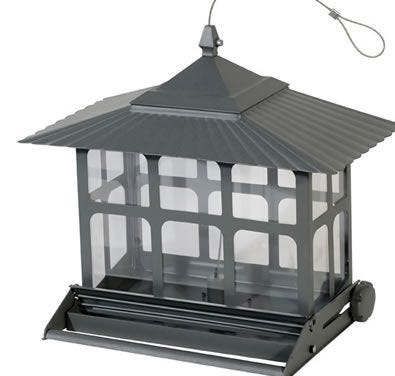
1 Remove Attractants
Allowing food sources and debris to accumulate in your yard is like inviting squirrels down for a snack. Maintain the cleanliness of your yard to avoid attracting these nearby tree-dwellers.
- Rake up fallen berries, nuts, acorns, fruits and birdseed.
- Clean up any leftover food, drinks or pet food.
- Remove trash and secure garbage bins.
- Remove bird feeders, or replace your birdseed with a type that squirrels dislike, like safflower or nyger.
2 Limit Accessibility
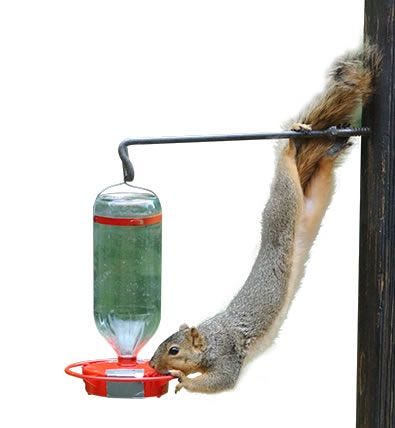
Once a squirrel makes its nest on your property, it’s very difficult to force it to relocate. You can reduce or prevent damage significantly by taking steps to limit a squirrel’s ability to invade your home and/or bird feeders.
- Squirrels can leap across a distance of 10 feet; trim any tree limbs that come within this distance of your house or feeders.
- Cover nearby electrical or telephone wires with plastic tubing (on which squirrels cannot balance), to limit access to your roof.
- Use a chimney guard and close/repair all holes that may lead inside your house.
- Switch to squirrel-resistant bird feeders, or add a squirrel baffle to your current feeder.
3 Identify Squirrel Activity

It's important to identify the nature and location of your squirrel damage as well as their travel paths, so that you can select the best control method.
Destructive squirrel habits include:
- excavating bulbs and seeds
- stealing fruits and berries
- pilfering bird seed from feeders
- gnawing through wood siding
- girdling trees
- digging small holes in your lawn to collect and hoard food
- nesting in your attic
4 Choose Your Squirrel Control Methods
Once you've learned about your squirrels' habits and whereabouts, you will be able to choose the control methods that are right for you. Squirrels are some of the most abundant nuisance critters, so you will have to be thorough and persistent with your defense. The more solutions you choose to employ, the better your chances will be at achieving long-term squirrel control.
Live Squirrel Trap
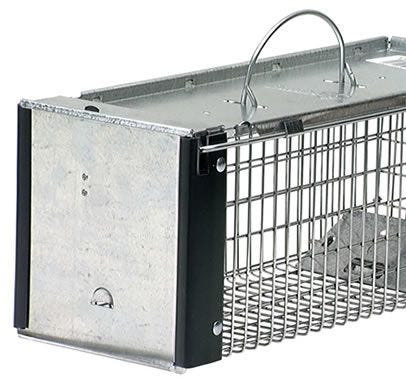
The best way to completely remove a squirrel is to use a live squirrel trap and manually relocate it. Using a live trap is easy:
- Select a small-sized cage trap with a sensitive trigger plate that will react to lightweight animals.
- Position your trap on a flat surface along a squirrel's path.
- Bait the trap by placing sunflower seeds (or other squirrel baits) towards the back of the trap - behind the trigger plate.
- Set your trap and check it frequently.
For more squirrel trapping tips, read How to Trap Squirrels »
Shop Traps »Squirrel Repellents
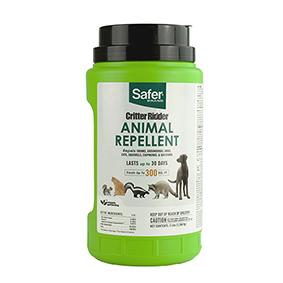
Applying a powerful squirrel repellent will help prevent destructive chewing and keep squirrels from approaching certain problem areas.
- Spray liquid repellents onto surfaces like bird feeders, bulbs, trees, lawns and soil to keep squirrels off and prevent gnawing and digging.
- Sprinkle granular repellents around the perimeter of structures, plants and gardens to prevent entry.
To repel a squirrel, a repellent that works via irritation or a taste-based repellent is best. Additionally, because squirrels are so tenacious, it is strongly recommended to use both liquid and granular repellents to make your yard as uninviting as possible.
For more repelling tips, read How to Repel Squirrels »
Shop Repellents »Electronic Repellents
Reinforce taste deterrents with electronic repellents, which use sudden bursts of water to frighten away approaching squirrels. These repellents are eco-friendly, versatile and can protect virtually any area around your property. For example:
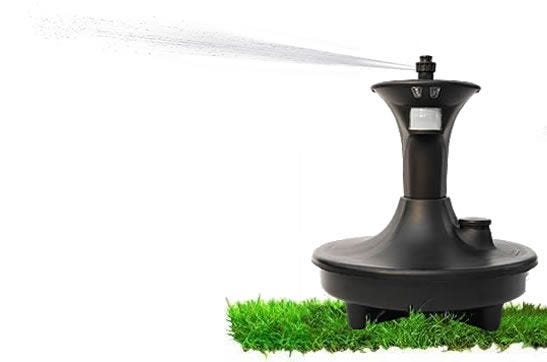
- Discreetly positioning an electronic repellent within a berry patch to prevent squirrels from stealing the fruit.
- Place a hose-free device on a flat rooftop to keep squirrels off.
- Surround your home with multiple devices to create a squirrel-repelling barrier.
Electronic solutions rely on sight to activate. Therefore, repelling a very small animal, such as a chipmunk, may be difficult depending on your situation. The use of electronic solutions alone may not be ideal for permanent chipmunk removal, but they are great additions to traditional liquid and granular repellents as part of an integrated approach.
For more information, read Why Electronics »
Shop Electronic Repellents »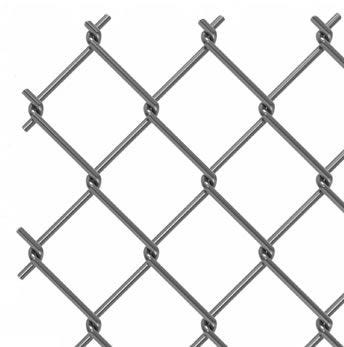
Mesh Fencing
Install mesh fencing in front of structural openings, underneath porches and around vegetation to exclude squirrels from these areas:
- Create an "L"-shaped barrier to exclude squirrels from foundations or access to crawlspaces/porches. The mesh should penetrate the ground approximately 1 foot.
- Construct a mesh cage around bulbs or even an entire garden to keep squirrels out.
Use 1/4" galvanized wire mesh to be sure squirrels cannot squeeze through the openings.
Expert Tips
- Squirrels can cause significant structural damage to buildings. It's important to take preventative measures to limit your home's accessibility. Immediately take action if a squirrel does get inside to avoid a full infestation - one squirrel can give birth to 5 kits every 6 months.
- With their strong teeth, squirrels can chew through just about any material. Switch to metal garbage cans as well as rodent-proof storage containers to completely protect pet food and trash from squirrels.
- If locked inside a structure, a squirrel will cause a lot of damage by trying to chew its way out. Place a live trap in the room or between the walls where the squirrel is trapped, and close off all entryways. Check your trap often until the squirrel is captured.
- Repellents should be applied at the very first signs of squirrel activity to prevent them from establishing any patterns or habits in your yard.
- The best squirrel repellents repel by taste, causing a strong irritation upon encounter. The most effective are pepper-based taste deterrents that have been proven to work.
- Squirrels like to dig up and eat bulbs. When planting bulbs, dip them in repellent and then cover them with a thick layer of sharp mulch that squirrels will not want to dig into. You can also choose flower varieties that squirrels are known to dislike, such as daffodils, hyacinth, and alliums.
- Utilizing multiple squirrel control solutions will result in the most effective defense. Shop and learn more about Havahart® squirrel products here »
